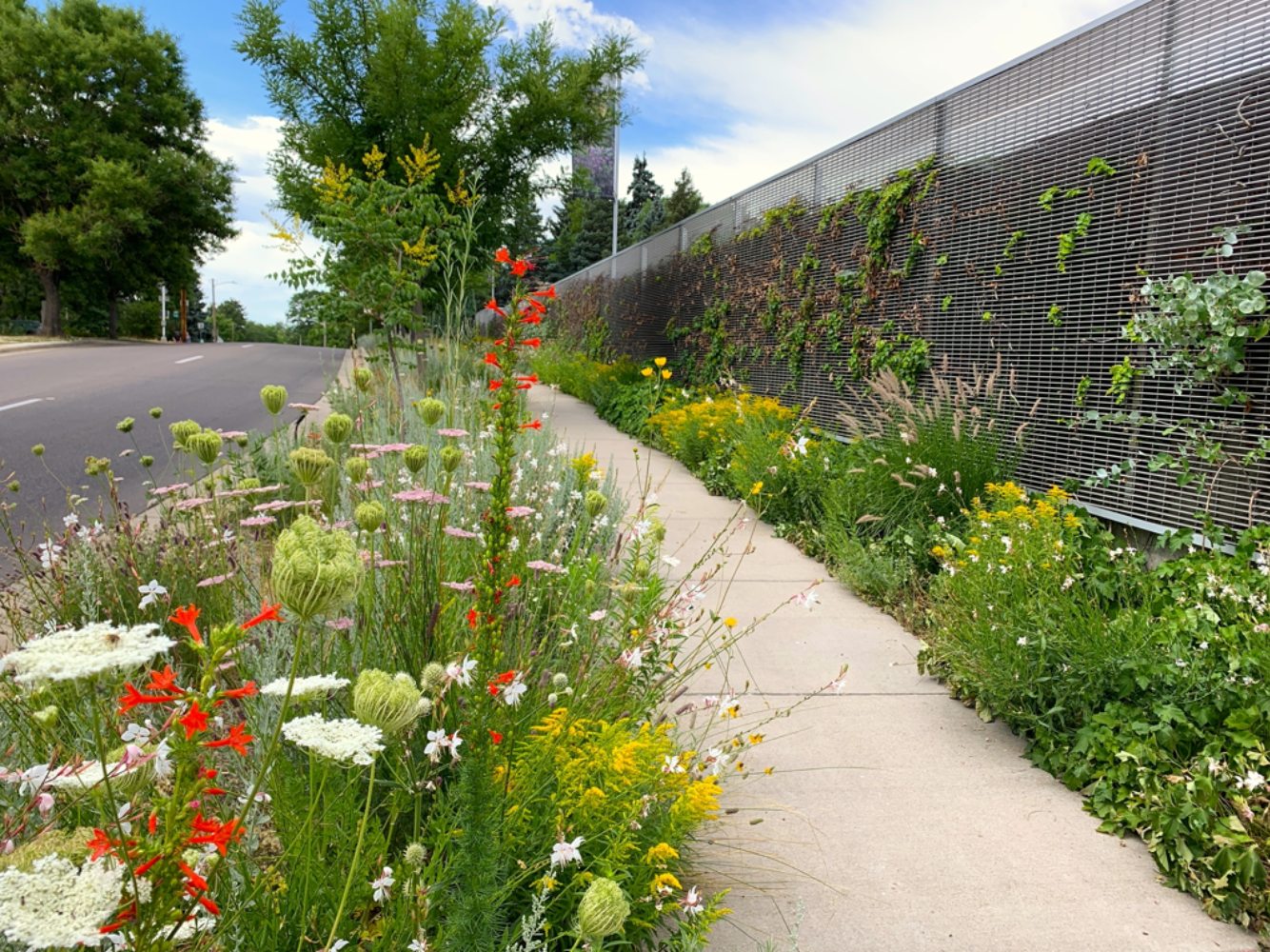By Emily Morris
March 28, 2022
The 2022 Create Beauty Design Conference was held on March 4th with horticulturist and Assistant Curator at Denver Botanic Gardens, Kevin Williams. Kevin shared plant design perspectives that derive from his vast knowledge of the steppe landscape. He introduced the audience to the steppe ecosystem, showed how it can inform garden design in Colorado, and then led a hands-on workshop from these ideas. Guests walked away with fresh methods for their garden design processes that challenge traditional thinking and push the industry towards a Colorado design aesthetic that reflects the local environment with integrity.
In his first talk, Kevin walked us through the vast steppe region. He showed us that there are 40,000 different plant species in steppes globally which opens up a world of possibilities for a well-adapted plant palette in Colorado gardens. He then shared some of his own work with us: the Josephine Streetscape in front of the Denver Botanic Gardens and the SummerHome Garden—both projects in which he drew inspiration from the steppe and worked to create drought dynamic plant communities.
Kevin used both seeding and planting in these projects, and he leaned on annual species in his seed mixes to carry the projects through their establishment phases. From his presentation, we learned a few lessons:
Be wary of engineering soils. It’s better to choose plants that are well adapted to the site. Kevin learned this firsthand when he crafted a sandy soil mix for the Steppe area in the Denver Botanic Gardens to create better drainage conditions, but the planting proved to be unsuccessful.
We should stop thinking in terms of drought tolerance. Reframing our focus to drought dynamic will give gardens the opportunity to implore their adaptability—to respond to the site conditions and evolve into a stable ecosystem. “Drought tolerance is dead. The future is drought dynamic.”–Kevin Williams
We should rethink our irrigation systems in steppe gardens which are meant to be drought dynamic. The SummerHome garden was only irrigated temporarily for establishment and now only requires supplemental water during periods of intense drought.
Seed with a diverse set of species. At SummerHome, 60-70 species were seeded, but only 1-2 dozen appeared.
The SummerHome Garden in Denver, CO. Photo by Kevin Williams
The Josephine Streetscape near Denver Botanic Gardens. Photo by Kevin Williams.
The Josephine Streetscape near Denver Botanic Gardens. Photo by Kevin Williams.
In his second talk, Kevin introduced a design method called Wild Systems Emulation where he uses compositions found in the urban or natural environment (ie. graffiti, camouflage pattern, abstract art, lichen, shrubland) to inspire the design of a landscape. He showed us how the process informed the creation of the SummerHome Garden and how it resulted in an aesthetically beautiful and dynamic plant community. Kevin’s philosophy? Sometimes taking the designer out of the design creates a better end product. He says “One of the reasons [he] loves this system is because it challenges our first instincts and rejects our training. Even when we try to make things seem as natural as possible, we just make them seem like us… Wild Systems Emulation can help us create a sense of something else, taking out the heavy-handedness of the designer and encouraging acceptance of wandering and competing plant communities.”
Caption: An example from Kevin of a wild system to draw inspiration from. Photo: Kevin Williams
Kevin prefaced these ideas by first discussing the definition of “wild”, which formerly had some negative connotation in its definitions. He reframed the word to be built around the idea of surprise. Wild: “Something surprising.” He told us that “Wilderness exists in any moment that we feel fully absorbed in, or possibly overwhelmed by a situation, creature, thought or moment that surprises us. Wilderness is a state of perception triggered by external or internal circumstances and leads to some of the most beautiful and ugly moments in our lives.” Kevin aims to invoke this sense of surprise and wilderness through his approaches to garden design.
Lichen. Photo by Kevin Williams.
After absorbing a lot of new ideas, we all moved to a Wild Systems workshop that was created in collaboration with the Tree of Life Team. With beans, blocks, and patterns, we simulated the creation of a wild system that could one day inspire a garden design. Our speaker wanted to get us thinking outside of the box!
A wild system created in the workshop. Photo: Emily Morris
To end the conference, Kevin took us through some thought experiments—a tool he uses to get away from becoming complacent in his design thinking. He shared lists of plants that he and his coworkers brainstormed and put them into categories like “Tropixerical - Xeric plants for the Front Range that give a tropical feel” and “Front Range Rubble Garden - Survives in urban rubble substrate”. There was a “Front Range Food Forest” category and even the aptly named “Garden of Pain and confusion” for thorny and spiky plants such as rosa and eryngium.
Throughout the conference, we appreciated Kevin’s willingness to stray from conventional thinking and learning. Everyone walked away with fresh perspectives and a challenge to explore new approaches to plant design. We’re already looking forward to the next time Kevin speaks at one of our conferences. In the meantime, we’ll work on bringing another thought leader to the Spring 2023 conference. See you then!








